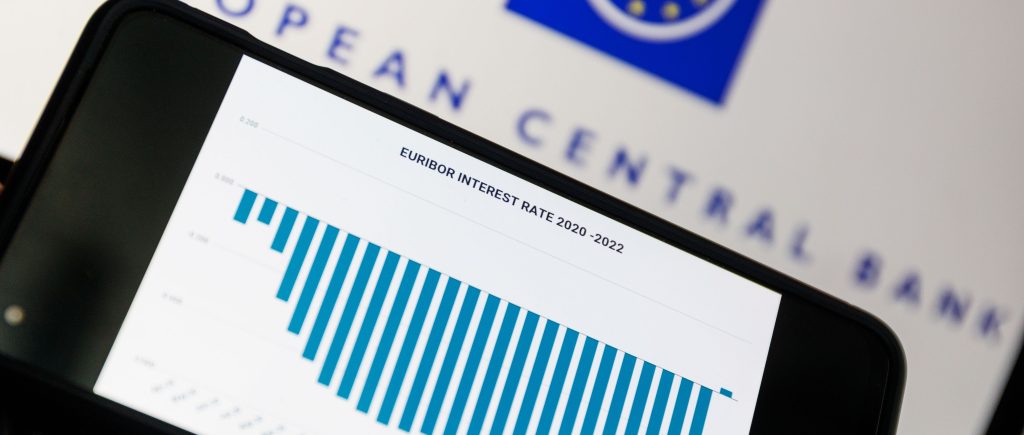The European Central Bank will announce its decision on monetary policy on Thursday, October 27 at 12:15 GMT and as markets get closer to the release time, here are the expectations as forecast by the economists and researchers of 15 major banks.
Economists broadly expect the ECB to raise borrowing costs by 75 bps for the second time in a row. That would put the main refinancing rate at 2% and the deposit rate at 1.50%.
Danske Bank
“ECB meeting is set to bring another 75 bps rate hike in all three policy rates. We expect Lagarde to say that the probability of the ECB staff’s downside risk scenario from the September projection exercise is becoming more likely but fall short of giving new significant policy signals. We expect the ECB to continue to hike its policy rates until early next year, with the risk of potential further hikes if fiscal initiatives support the growth outlook in such a way that inflation remains too high over the medium-term.”
Nordea
“We expect the ECB to raise rates by 75 bps and signal that more hikes will be in store, point to incoming data and the new forecasts available in December determining the size of the next move but to generally sound hawkish, debate when and how to start reducing the ECB’s huge bond portfolio but leave the decision until the December meeting and announce technical changes to encourage banks to early repayments of the TLTROs and possibly also measures to ease the tensions in the government bond markets.”
ING
“A 75 bps hike looks like a done deal but the ECB has a lot on its plate at its October meeting. Quantitative Tightening talks are premature but it will seek to mop up bank liquidity. Rates, sovereign and money market spread upside dominates with the 10Y Bund set to test 2.5%. None of this should be enough to support the EUR.”
TDS
“We expect the Governing Council to hike ECB rates by 75 bps, taking the Depo Rate to 1.50%. Messaging at this meeting is likely to remain focused on record-high inflation rather than soft growth.”
Commerzbank
“We expect the ECB Council to decide to raise key interest rates by a further 75 bps as well as to change the TLTRO conditions so that commercial banks will no longer be able to make safe profits on TLTROs.”
Rabobank
“A 75 bps rate hike seems like a done deal. We have also upgraded our expectations for the next few meetings, and now see the deposit rate reach 3% by March. The ECB seems determined to end the TLTRO arbitrage. We expect the ECB to try to minimise market impact, but we predominantly see risks of a more negative €STR-deposit rate spread. Quantitative tightening may be explored, but any tangible plans are unlikely.”
Deutsche Bank
“We expect another 75 bps hike, followed by 75 bps in December, 50 bps in February and 25 bps in March, reaching a terminal rate of 3%. The press conference as ever will be a focal point and there’ll be lots of attention on technical things surrounding TLTROs and excess reserves.”
Nomura
“We forecast the ECB Governing Council will raise all three key interest rates by 75 bps. This would bring the depo rate to 1.50%, the refi rate to 2.00% and the marginal lending rate to 2.25%.”
ANZ
“Faced with rising and broadening inflation, we expect the ECB to raise rates by 75 bps and maintain its hawkish guidance. There may be a focus on when 50 bps rise will be appropriate. At some point, quantitative tightening will need to be part of the normalisation process. The ECB will proceed with caution given the widening trend in regional spreads and recent turmoil in the gilts market. We think QT is an early 2023 story. Containing inflation is central to the euro area’s economic stability. There is hope that headline HICP may peak in the coming months following the fall in gas prices. However, core inflation and wages are rising.”
Citibank
“We expect the ECB to hike policy rate by 75 bps, taking the deposit rate to 1.5%. More rate hikes are likely to be signaled. It is probably too early to take complicated decisions on unwinding asset purchases.”
BMO
“We look for a 75 bps increase: the deposit facility to 1.50%, marginal lending facility to 2.25%, and the refi rate to 2.00%. This would be the second in a series of moves to get to terminal; or, as President Lagarde laid out in September, ‘it’s probably more than two, including this one, but it’s probably also going to be less than five’. Many ECB members have taken on increasingly hawkish tones. With headline inflation of 9.9% and core CPI at 4.8% (both a record) and headed higher, the Governing Council will likely be forced to front-load more aggressive hikes to fulfill its mandate of price stability. Even France’s François Villeroy de Galhau, whose views are more middle-of-the-road, declared that he expects the ECB to ‘go quickly’ to reach a 2% deposit rate by year-end.”
Wells Fargo
“We expect the ECB to deliver another 75 bps increase to its Deposit Rate, bringing that rate to 1.50%. We doubt any announcement on quantitative tightening would come before December, while we currently do not expect any implementation of quantitative tightening to begin before March 2023.”
Crédit Agricole
“We expect the Governing Council to meet the market expectations and deliver a 75 bps hike but to signal that the policy normalization would slow down from here while a potential QT is not imminent. This much would warrant a cautious view on the EUR from current levels.”
Bank of America
“We expect the ECB to hike 75 bps with a clear signal of more to come, in line with recent communication and market pricing. We argue it is too early for QT (quantitative tightening), but the language around APP (Asset Purchase Programmes) reinvestments is likely to change, preparing the ground for discussions. An announcement on punitive tiering or changing TLTRO (Targeted Long Term Refi Operations) terms seems likely to us, even if the details follow later. In FX, we do not believe the hawkish ECB steps and tone will be enough to support the EUR, given market expectations and remaining challenges.”
SocGen
“We now expect another 75 bps hike by the ECB in October and more rate hikes through next spring, barring a deeper recession, for a terminal rate of 3% by mid-2023. Faster rate hikes also move quantitative tightening (QT) up the agenda, and we now expect a gradual start by mid-2023. However, with the balance sheet playing an important role for financial stability (see the UK) and avoiding fragmentation, QT options and communication will need to be assessed carefully. Focusing initially on private sector assets, allowing greater capital key flexibility and/or a faster TLTRO reduction could help smooth any market volatility or increased fragmentation.”

 Noor Trends News, Technical Analysis, Educational Tools and Recommendations
Noor Trends News, Technical Analysis, Educational Tools and Recommendations




